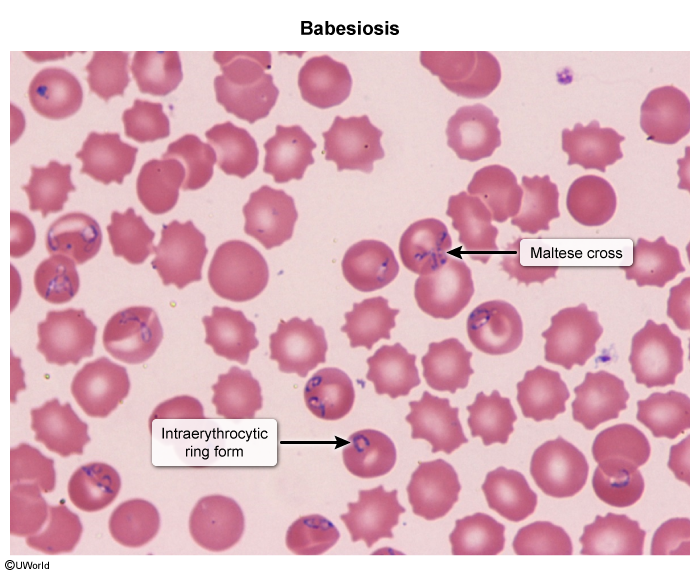Babesios
Article Sections
Introduction
Babesiosis is an intraerythrocytic protozoal infection transmitted primarily by the Ixodes tick. It is the second most common blood parasite worldwide after Plasmodium (malaria). Babesia microti (United States, Asia) and Babesia divergens (Europe) are the leading species. The major environmental reservoir is small vertebrates (eg, white-footed mice). Asymptomatic infection can occur, but patients often develop clinically significant hemolytic anemia with flu-like symptoms (eg, fever, malaise, fatigue). Those with asplenia or immunocompromise are at risk for severe, life-threatening complications.
Risk factors
- Exposure to endemic areas (eg, Northeastern/Upper Midwestern United States).
- Exposure to tick habitats (eg, high grass, edge of forest).
- Nymphal Ixodes tick season (summer months).
- Blood transfusion.
- Risk for severe disease:
- Asplenia/hyposplenism.
- Immunocompromise (eg, AIDS, malignancy, immunotherapy).
- Age >50.
Continue Learning with UWorld
Get the full Babesios article plus rich visuals, real-world cases, and in-depth insights from medical experts, all available through the UWorld Medical Library.
Images
